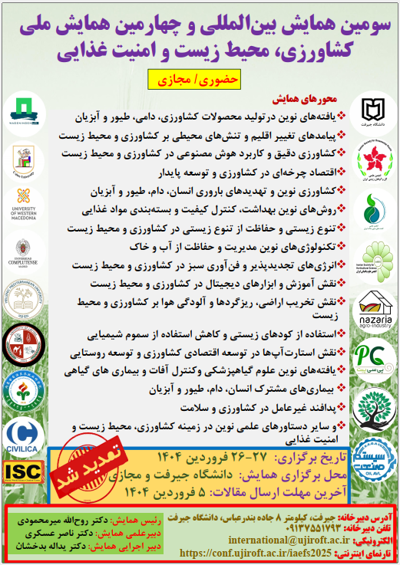0% Complete

نویسندگان :
کلمات کلیدی :
چکیده :
لیست مقالات بایگانی شده
علی نخ زری مقدم - افشین سلطانی - علی منصوری راد - علی راحمی کایزکی - بنیامین ترابی - مهین پودینه
احسان بیژن زاده - حمید رضا بوستانی - مهدی نجفی قیری
زینب فیروزبخت - حمیدرضا علیزاده - قباد جلالی
مهدی پورهاشمی - مهناز هاشمی روان - نازنین زند - علیرضا شهاب لواسانی
Leili Salahshour - Nader Bahramifar
منیره ابویی - ناصر برومند - معصومه صالحی
زهره الویار - معصومه مصطفائی
نفیس عاشوری - شیرین دیانتی دیلمی - سهیل کریمی
میثم یعقوبی دشتاب ئی - مجید گل شیخی
شیما امیدی - زهرا رنجبری نسب - سمیه سنجری

